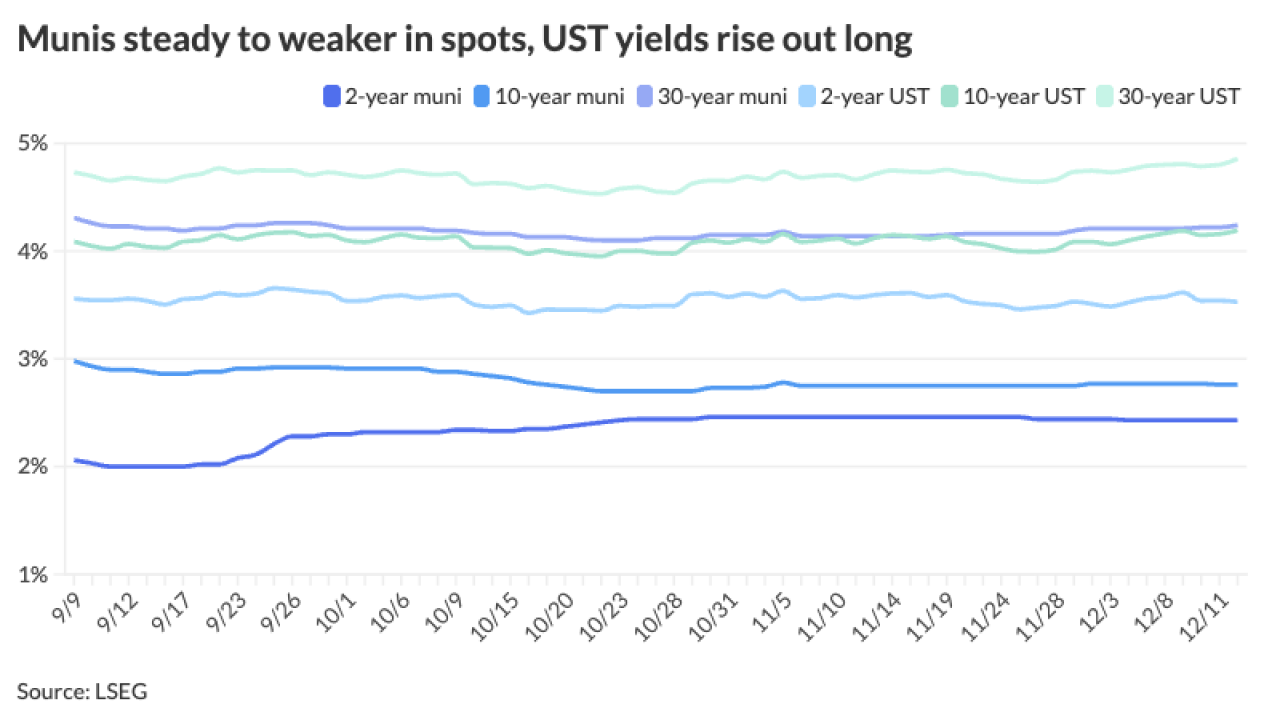Joe Biden's election as president has raised the specter of a federal public works program designed to boost climate resilience.
Nonprofit think tank Center for an Urban Future wants New York City to get a running start.
A
“The way I see it, very few cities could benefit more from a public-works program than New York,” said the center’s executive director, Jonathan Bowles. He cited jobs creation amid a COVID-19 pandemic that has crippled the city’s economy and much unfinished resiliency work.
“New York, especially, has a lot of urgent work to do to prepare for climate change," said Bowles, who wrote the report with colleagues Laird Gallagher, Safiyyah Edwards and Cameron Haas. General Contractors Association of New York funded the study.

Democrat Biden, while campaigning, proposed a $2 trillion infrastructure plan to boost the economy and tackle climate change. He also called for the creation of a Civilian Climate Corps, modeled after President Franklin Roosevelt’s New Deal-era Civilian Conservation Corps.
Noteworthy among the 40 ideas — conceptual and lacking cost estimates for now — are the construction of stormwater storage structures in low-lying neighborhoods; a climate corps to install energy retrofits; “ecohubs” in New York City Housing Authority developments; and green jobs through resilience retrofit certifications.
Other recommendations include energy resilience through community solar; conversions of vacant storefronts into temporary hydroponic food production facilities; a green roof installation boost, starting with city properties; curbside organic waste containers; wetlands restoration; and floating farms on barges.
“All the ideas are well thought-out and should be implemented,” said Alan Rubin, a principal at Blank Rome LLP and co-head of its severe weather emergency recovery team.
Selling the economic benefits at the state and local levels are critical, Rubin said. “There has to be an economic quid-pro-quo in a way that you can be pari-passu [side-by-side] with the funding.”
Stormwater storage in low-lying residential areas, a recommendation of urban architecture firm Raven A+U principal Jeffrey Raven, are fairly easy to accomplish and should be high priority, Rubin added. Such areas include Hudson River Park, FDR Drive, the Brooklyn-Queens Expressway and the Major Deegan Expressway.
While the ideas are conceptual and lack cost estimates, Bowles said a federal carrot could induce state and local funding.
“This would present an opportunity the state should not pass up,” Bowles said. “I’m not sure I have a ‘favorite child,’ but these are lot of good ideas.”
Cortney Worrall, president of the advocacy group Waterfront Alliance, said the city should invest in resilient waterfront infrastructure by greening ports and constructing renewable energy infrastructure.
In addition, she said, every borough should have a working pier to accommodate last-mile package delivery and remove trucks from roads as e-commerce increases local delivery traffic.
Ecohubs, on-site farms designed as closed-loop systems, on unused NYCHA land could generate produce to communities with limited access to fresh foods and spawn sustainability and educational programs, said Micah Kotch, managing director for startup accelerator Urban-X.
The city, state and federal government should fund such development using a NYCHA workforce, according to Kotch.
Rubin called the educational component vital to this initiative. “Get the kids involved, where they can grow and eat their own food,” he said. “Then it will work really well.”
Other viable projects, according to Bowles, include fortifying Manhattan’s West Side coastline up the Hudson River. So far, an East Side coastal resiliency plan has encountered a lawsuit over the planned burial and reconstruction of a park and delays related to the pandemic.
Hunts Point in the Bronx needs better flood protection, said Amy Chester, managing director at Rebuild by Design. While the meat, fish and produce markets there provide the main food supply hub for the city, the low-lying peninsula is cut off from its adjacent neighborhood.
“New York gets so much of its food from Hunts Point,” Bowles said. “If the water from [Hurricane] Sandy had landed differently, Hunts Point would have been more vulnerable.”
Unfinished work also remains in the Rockaway Peninsula in southern Queens, according to Judah Asimov, senior manager for planning and outreach for the organization Rockaway Initiative for Sustainability and Equity.
That includes enhancing the Rockaways dunes and raising streets in low-lying neighborhoods such as Arverne, Edgemere and Far Rockaway.





